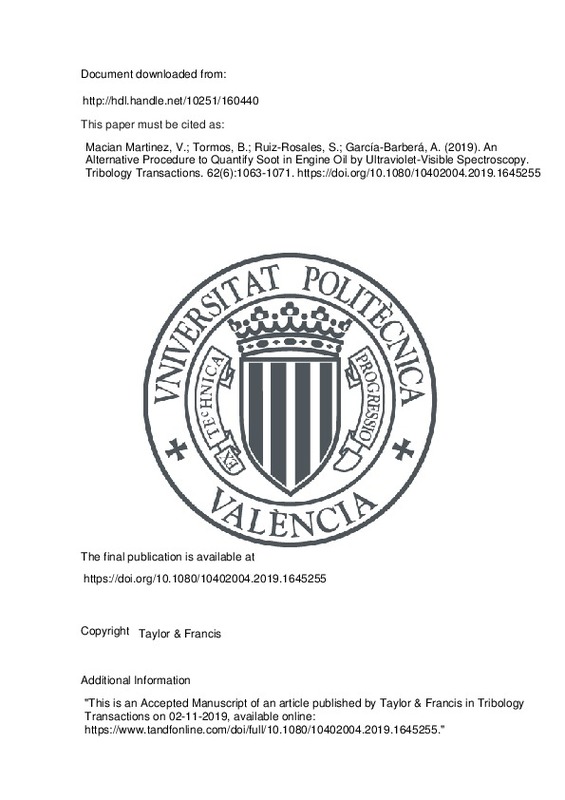Squaiella, L. L. F., Martins, C. A., & Lacava, P. T. (2013). Strategies for emission control in diesel engine to meet Euro VI. Fuel, 104, 183-193. doi:10.1016/j.fuel.2012.07.027
Piock, W., Hoffmann, G., Berndorfer, A., Salemi, P., & Fusshoeller, B. (2011). Strategies Towards Meeting Future Particulate Matter Emission Requirements in Homogeneous Gasoline Direct Injection Engines. SAE International Journal of Engines, 4(1), 1455-1468. doi:10.4271/2011-01-1212
Johnson, B. T. (2008). Diesel Engine Emissions and Their Control. Platinum Metals Review, 52(1), 23-37. doi:10.1595/147106708x248750
[+]
Squaiella, L. L. F., Martins, C. A., & Lacava, P. T. (2013). Strategies for emission control in diesel engine to meet Euro VI. Fuel, 104, 183-193. doi:10.1016/j.fuel.2012.07.027
Piock, W., Hoffmann, G., Berndorfer, A., Salemi, P., & Fusshoeller, B. (2011). Strategies Towards Meeting Future Particulate Matter Emission Requirements in Homogeneous Gasoline Direct Injection Engines. SAE International Journal of Engines, 4(1), 1455-1468. doi:10.4271/2011-01-1212
Johnson, B. T. (2008). Diesel Engine Emissions and Their Control. Platinum Metals Review, 52(1), 23-37. doi:10.1595/147106708x248750
Johnson, T. V. (2008). Diesel Emission Control in Review. SAE International Journal of Fuels and Lubricants, 1(1), 68-81. doi:10.4271/2008-01-0069
Mohan, B., Yang, W., & Chou, S. kiang. (2013). Fuel injection strategies for performance improvement and emissions reduction in compression ignition engines—A review. Renewable and Sustainable Energy Reviews, 28, 664-676. doi:10.1016/j.rser.2013.08.051
ALKEMADE, U., & SCHUMANN, B. (2006). Engines and exhaust after treatment systems for future automotive applications. Solid State Ionics, 177(26-32), 2291-2296. doi:10.1016/j.ssi.2006.05.051
Bensaid, S., Caroca, C. J., Russo, N., & Fino, D. (2011). Detailed investigation of non-catalytic DPF regeneration. The Canadian Journal of Chemical Engineering, 89(2), 401-407. doi:10.1002/cjce.20408
E, J., Xie, L., Zuo, Q., & Zhang, G. (2016). Effect analysis on regeneration speed of continuous regeneration-diesel particulate filter based on NO 2 -assisted regeneration. Atmospheric Pollution Research, 7(1), 9-17. doi:10.1016/j.apr.2015.06.012
Tripathi, A., & Vinu, R. (2015). Characterization of Thermal Stability of Synthetic and Semi-Synthetic Engine Oils. Lubricants, 3(1), 54-79. doi:10.3390/lubricants3010054
Karacan, Ö., Kök, M. V., & Karaaslan, U. (1999). Journal of Thermal Analysis and Calorimetry, 55(1), 109-114. doi:10.1023/a:1010136222719
Heredia-Cancino, J. A., Ramezani, M., & Álvarez-Ramos, M. E. (2018). Effect of degradation on tribological performance of engine lubricants at elevated temperatures. Tribology International, 124, 230-237. doi:10.1016/j.triboint.2018.04.015
Wattrus, M. (2013). Fuel Property Effects on Oil Dilution in Diesel Engines. SAE International Journal of Fuels and Lubricants, 6(3), 794-806. doi:10.4271/2013-01-2680
Sharma, V., Uy, D., Gangopadhyay, A., O’Neill, A., Paxton, W. A., Sammut, A., … Aswath, P. B. (2016). Structure and chemistry of crankcase and exhaust soot extracted from diesel engines. Carbon, 103, 327-338. doi:10.1016/j.carbon.2016.03.024
Pfau, S. A., La Rocca, A., Haffner-Staton, E., Rance, G. A., Fay, M. W., Brough, R. J., & Malizia, S. (2018). Comparative nanostructure analysis of gasoline turbocharged direct injection and diesel soot-in-oil with carbon black. Carbon, 139, 342-352. doi:10.1016/j.carbon.2018.06.050
George, S., Balla, S., Gautam, V., & Gautam, M. (2007). Effect of diesel soot on lubricant oil viscosity. Tribology International, 40(5), 809-818. doi:10.1016/j.triboint.2006.08.002
Antusch, S., Dienwiebel, M., Nold, E., Albers, P., Spicher, U., & Scherge, M. (2010). On the tribochemical action of engine soot. Wear, 269(1-2), 1-12. doi:10.1016/j.wear.2010.02.028
Green, D. A., & Lewis, R. (2008). The effects of soot-contaminated engine oil on wear and friction: A review. Proceedings of the Institution of Mechanical Engineers, Part D: Journal of Automobile Engineering, 222(9), 1669-1689. doi:10.1243/09544070jauto468
Bredin, A., Larcher, A. V., & Mullins, B. J. (2011). Thermogravimetric analysis of carbon black and engine soot—Towards a more robust oil analysis method. Tribology International, 44(12), 1642-1650. doi:10.1016/j.triboint.2011.06.002
VAN DE VOORT, F. R., SEDMAN, J., COCCIARDI, R. A., & PINCHUK, D. (2006). FTIR Condition Monitoring of In-Service Lubricants: Ongoing Developments and Future Perspectives. Tribology Transactions, 49(3), 410-418. doi:10.1080/10402000600781432
Van de Voort, F. R., Ghetler, A., García-González, D. L., & Li, Y. D. (2008). Perspectives on Quantitative Mid-FTIR Spectroscopy in Relation to Edible Oil and Lubricant Analysis: Evolution and Integration of Analytical Methodologies. Food Analytical Methods, 1(3), 153-163. doi:10.1007/s12161-008-9031-6
Ess, M. N., Ferry, D., Kireeva, E. D., Niessner, R., Ouf, F.-X., & Ivleva, N. P. (2016). In situ Raman microspectroscopic analysis of soot samples with different organic carbon content: Structural changes during heating. Carbon, 105, 572-585. doi:10.1016/j.carbon.2016.04.056
Russo, C., Apicella, B., Lighty, J. S., Ciajolo, A., & Tregrossi, A. (2017). Optical properties of organic carbon and soot produced in an inverse diffusion flame. Carbon, 124, 372-379. doi:10.1016/j.carbon.2017.08.073
[-]







![[Cerrado]](/themes/UPV/images/candado.png)


